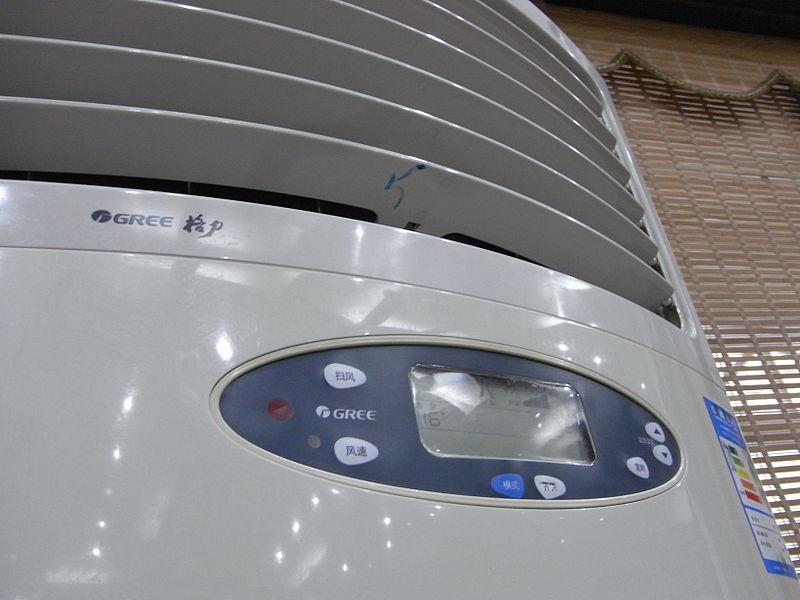China, U.S. to seek way to end production, use of climate change causing HFCs
Many air conditioners in China, like this one, run on HFC gasses, which have been tied to climate change. (Photo by Tsaoliphoin via Wikimedia Commons.)
The United Nations has been haggling over rules to address climate change since 1992, but has yet to reach a comprehensive deal.
But now the world’s two largest emitters, the United States and China, have struck an agreement to limit their use of the potent greenhouse gases called hydrofluorocarbons, HFCs. The pact is based on the rules of the Montreal Protocol, which governs the gases that destroy the ozone layer.
Jennifer Morgan, director of the Climate and Energy Program at the World Resources Institute, said, simply, HFCs are the chemicals that go into air conditioners and refrigerators to generate the cool air needed for them to run. Previously, they’ve been unregulated on the international level.
“They were replacements for CFCs, which people might remember back from the late 80s which were a main cause of the hole in the ozone layer,” she said. “But now it’s been found that they are very potent greenhouse gas emissions and cause climate change.”
In fact, they can be as much as 1,000 times more potent in terms of raising the temperature of the planet than simple carbon dioxide.
In simple terms, China and the United States have agree to cooperate in eliminating HFCs. Morgan said that, using a similar system to the Montreal Protocol, they’ll seek to bring other countries into a system that phases out the production and use of HFCs, probably over a number of years, by 2050.
Using the framework of the Montreal Protocol is crucial, because it makes binding the commitments by the United States and China. Previously, China had stood with India in opposing a phase-out of HFCs.
“It’s very significant that these two players are coming to the table. It builds confidence, I think, of other countries for the most part — especially in Asia — that they’re going to work to find solutions rather than battle it out and things collapse,” Morgan said. “It’s a new era, in a way, for U.S.-China relations on climate.”
Morgan’s hopeful this is just the beginning of cooperation between the two largest polluters on climate issues — cooperation that will lead to further treaties on combatting global cimate change.
“One of the key worries often of other countries is whether the US and China can work together as the two biggest polluters. So I think it will inspire that,” she said. “I think it’s going bring a bit of a jitter in a positive way into the climate negotiations because it shows that international cooperation is really possible.”
